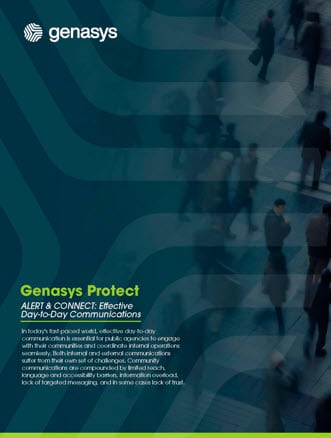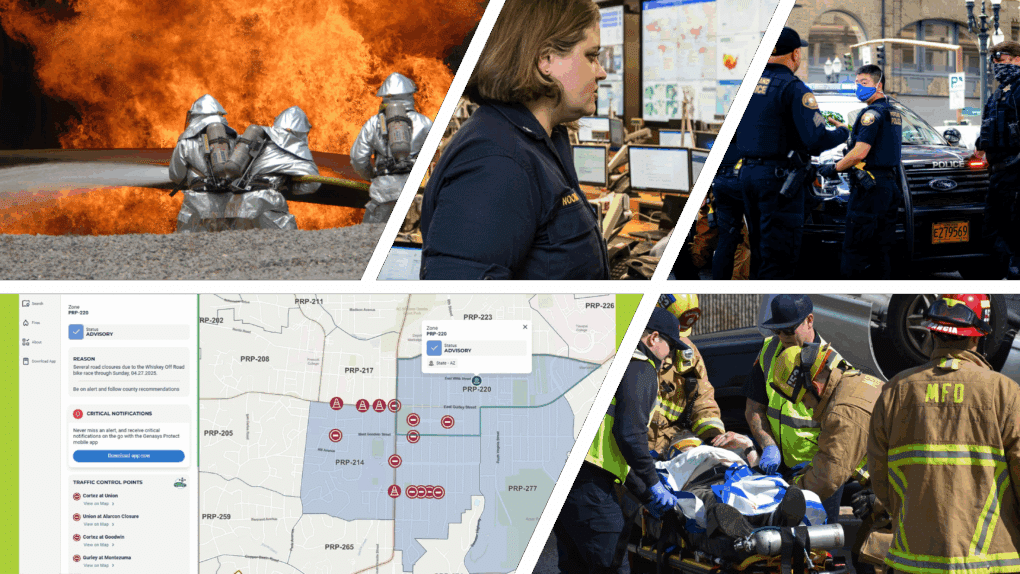By Allan Bullock, Director of Solutions Engineering, Genasys Inc.
The United Nations (UN) Office of Disaster Risk Reduction has launched an ambitious initiative—to protect every person on the planet with a country-specific national emergency broadcast system by 2027.
Under the “Early Warning for All” campaign, the UN plans to implement national emergency warning systems (NEWS) in every country. This mission comes in response to rising climate and weather-related hazards, which are endangering lives across the globe.
To back this endeavor, the UN has allocated $3.1 billion in funding to support countries that need to build or enhance their systems. But what exactly makes an emergency warning system effective, and how are these efforts evolving on a global scale?
UN’s “Early Warning for All Initiative”: A Global Safety Net
The UN’s initiative represents a bold step towards safeguarding lives against natural and human-made disasters. The goal is clear: every person, in every country, should be covered by a comprehensive early warning system by 2027. This plan addresses the growing threat of climate-induced hazards, such as floods, wildfires, and extreme weather, which are increasing in frequency and severity.
Currently, many vulnerable regions lack the necessary infrastructure to warn citizens of impending disasters. The initiative is not just about sending alerts but creating systems that are people-centric and focus on delivering timely, accurate, and actionable information.
By harnessing technology, communication networks, and robust protocols, the UN aims to build a global safety net that could save millions of lives over the coming years.
UN Allocates $3.1 Billion for National Emergency Warning Systems
To support the widespread implementation of national emergency warning systems, the UN has budgeted $3.1 billion. This funding will help countries, particularly those with limited resources, establish or enhance their warning capabilities. The funding is critical to ensure that even low-income nations can participate in the global effort to improve disaster preparedness.
The investment is also seen as a cost-saving measure overall. By minimizing damage and preventing the loss of life, effective early warning systems have been proven to reduce economic losses. For every dollar spent on disaster prevention and warning systems, multiple dollars are saved in post-disaster recovery costs.
The Gap in Protection: Vulnerable Countries Face Higher Mortality
Despite global awareness of disaster risks and climate adaptation, less than half of the world’s countries have fully implemented national emergency warning systems. This gap is alarming, as countries without these systems experience up to eight times higher mortality rates during disasters. The lack of infrastructure, coupled with inadequate communication networks, leaves millions of people vulnerable to hazards.
In regions prone to extreme weather events and natural disasters, the absence of an effective warning system can mean the difference between life and death. This highlights the urgency of the UN’s initiative to provide all countries with the necessary tools to implement robust and scalable early warning systems.
Genasys National Emergency Warning System: A Comprehensive Solution
One of the leading solutions that can support countries in this global initiative is the Genasys National Emergency Warning System (NEWS). Deployed in Australia after the devastating Black Friday wildfires, which claimed 71 lives and burned 4.9 million acres, NEWS was the world’s first geo-targeted, SMS-based national emergency alert system. Since the implementation of NEWS, no lives have been lost due to a lack of early warning in wildfires. Known for its comprehensive and country-wide coverage, Genasys NEWS offers an advanced multi-channel communication platform capable of delivering targeted, real-time alerts to individuals and communities regardless of whether they have opted in to notifications.
With NEWS, responders get real-time situational awareness that considers geo-spatial data on population movements and density. It enables flexible notifications for those in the immediately affected areas, and anyone entering during an emergency, through geo-fencing and passive location data. Encrypted and reliable, NEWS meets all major national technology mandates.
Genasys can play a critical role in helping countries access the $3.1 billion in UN funding by providing the technology and expertise required to meet the standards outlined in the “Early Warning for All” initiative. With its scalable infrastructure, Genasys can tailor solutions to fit national needs, ensuring that even the most remote populations are protected.
In addition, the funding allocated for National Emergency Warning Systems also includes hardware solutions. Genasys provides such hardware through Genasys ACOUSTICS. ACOUSTICS can integrate with NEWS to broadcast clear, long-distance voice messages and alert tones. Their broadcasts can be heard above loud background noise like a thunderstorm and penetrate solid structures and vehicles to be heard by everyone. They remain operational during power outages or network failures, ensuring uninterrupted public communication.
Conclusion
The United Nations’ push for global emergency warning systems by 2027 is a transformative step toward reducing the human toll of natural disasters. By investing multiple billions into this initiative, the UN aims to bridge the gap in protection, particularly in vulnerable regions.
With effective systems in place, countries can save lives and minimize the impact of increasingly frequent disasters. Solutions like Genasys NEWS are pivotal in ensuring the success of this global mission, providing both the technology and support necessary to build resilient communities.
As the world grapples with climate change and other emerging threats, early warning systems will become essential components of national infrastructure, helping to protect lives and livelihoods for generations to come.
Contact Genasys to learn more about NEWS and our ability to support you with funding requests to the UN.

















